William Grinly (auctioneer, Leith): “Great work, John, but can I also be standing on a *massive* bird?”
John Kay (sketch artist): “Ummmm, sure…”
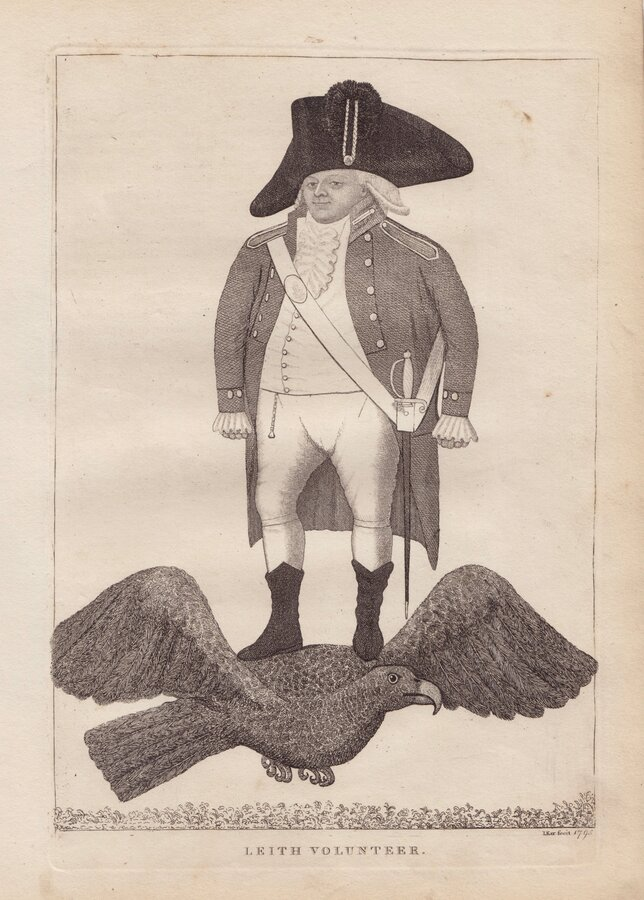
William Grinly (auctioneer, Leith): “Great work, John, but can I also be standing on a *massive* bird?”
John Kay (sketch artist): “Ummmm, sure…”

Summer 1970: a rare form of typhoid is infecting people in Edinburgh. Dr Nancy Conn, a bacteriologist at Western General, finds the source and prevents a major outbreak with detective work and sanitary towels.

Dr Nancy Conn is one of Scotland’s unsung women in STEM. I try to tell her story here.
Typhoid was and is uncommon in Scotland. Apart from an outbreak in Aberdeen in the 60s, most cases are linked to overseas travel. The Edinburgh outbreak was different. It was mainly children who were being infected, from different parts of the city.
None of them had ever been abroad and none had any link to India, where this rare strain of the Salmonella typhi bacterium comes from. Dr Conn sat with the patients and interviewed them in detail. Many were senseless with fever. She interviewed their friends and families too.
Only one thing seemed to link them– they had all played, fished, or picnicked at the Water of Leith–some had drunk the water. Dr Conn mapped out where the patients had been, but it covered a sizable stretch of a fairly polluted river.

Dr Conn set out to test the river water across the whole area the children had played. The standard protocol for collecting bacteria, known as Moore swabs, kept failing, got muddy and disintegrated in the fast, dirty river. Dr Conn made her own sturdy replacement samplers.
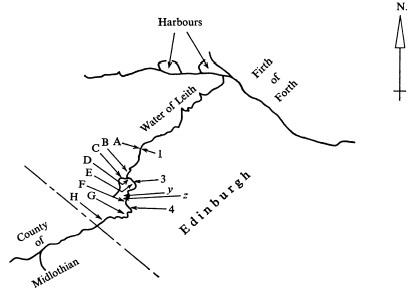
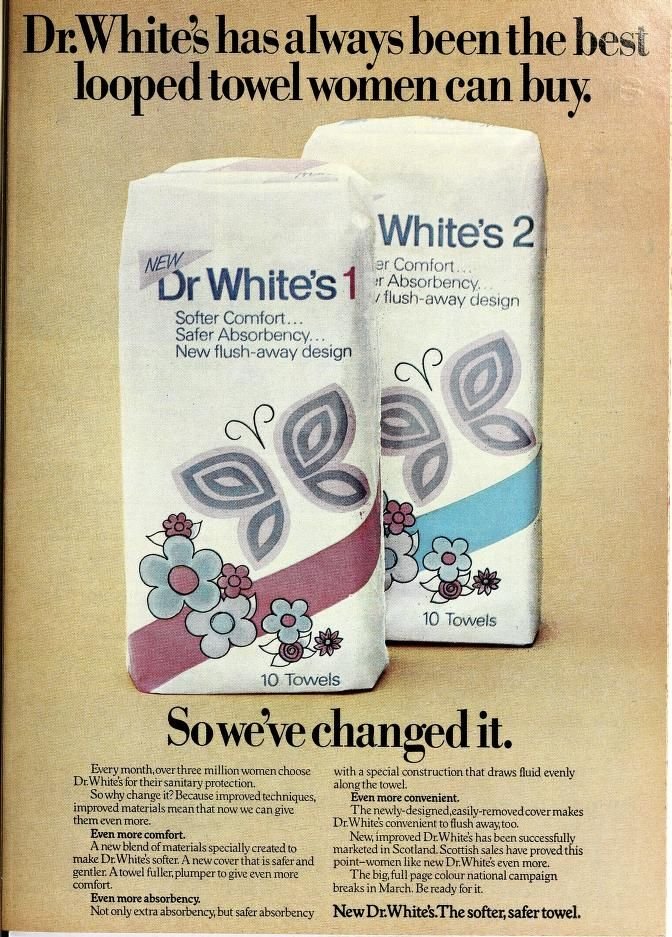
The sanitary towels, after being sunk in the river, were taken back to the lab and cultured. Some had collected the bacterium. Just upstream from the first one that came back positive, Dr Conn found a surface water drain outlet. Problem is, typhoid shouldn’t be in rain water.
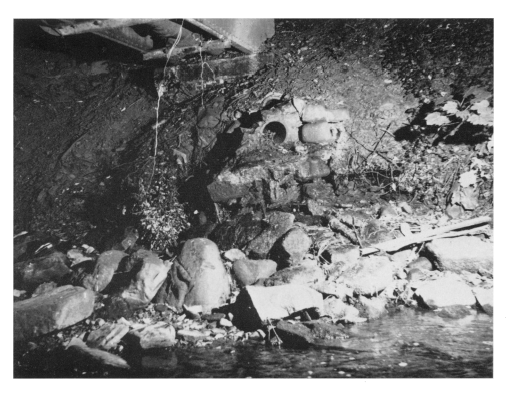
The outlet drained rain and surface water from all of the north of Colinton. Dr Conn called the City Engineers. She gave them packs of Dr White’s No. 1 sanitary towels and showed them how to use them. They put them down every drain and manhole north of the river to sample.
Like before in the river, Dr Conn cultured the samples in the lab and narrowed in on the source: one surface water drain that ran by one particular block of houses. The engineers dug up the road to investigate.The number of typhoid cases was rising.
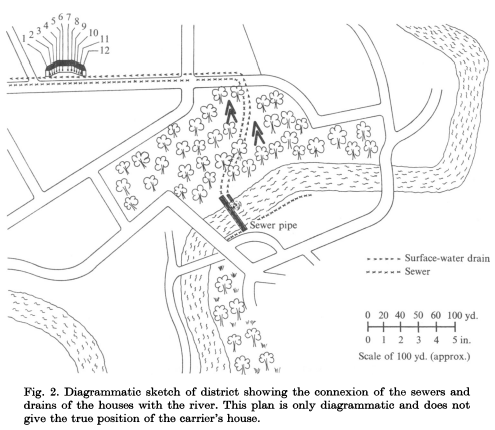
Sewer pipes are always installed below surface water drains for safety (in case the sewer leaks). When the housing block was built in the 1890s, the position of the pipes was switched, and so got connected up to the wrong outlets by the city.

Dr Conn took samples from the sludge traps of the 12 houses in the block and narrowed the source of the typhoid down to 2 houses (P and Q). To spare the residents embarrassment, she asked all houses to take part in a “survey” and collected samples from everyone.
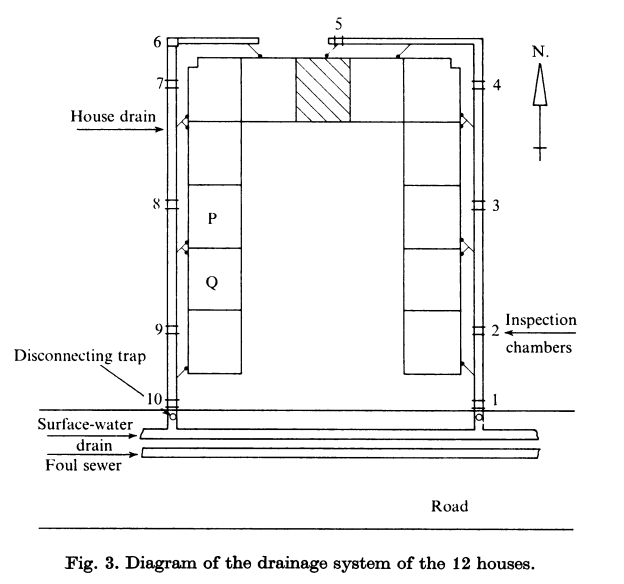
The source was a 76 year old woman who lived alone. She had never once been ill. She had never been abroad. She had lived in that house for 13 years. If not for Dr Conn and the faulty drains, she’d never have known she was an asymptomatic carrier of a rare Asiatic typhoid.
The carrier was identified 2 weeks before the last admitted typhoid case thanks to Dr Conn working flat out for 2 months. The carrier got treatment and the sewers were fixed, though they both remained positive for several months. So how did she become a healthy carrier?
Dr Conn interviewed her but, in short, nobody knows. She lived alone for most of her life, except with her father, who was a horse vet in the second Boer War and did travel afterwards. Maybe he was also an asymptomatic carrier of Salmonella typhi K1 and she got it from him?
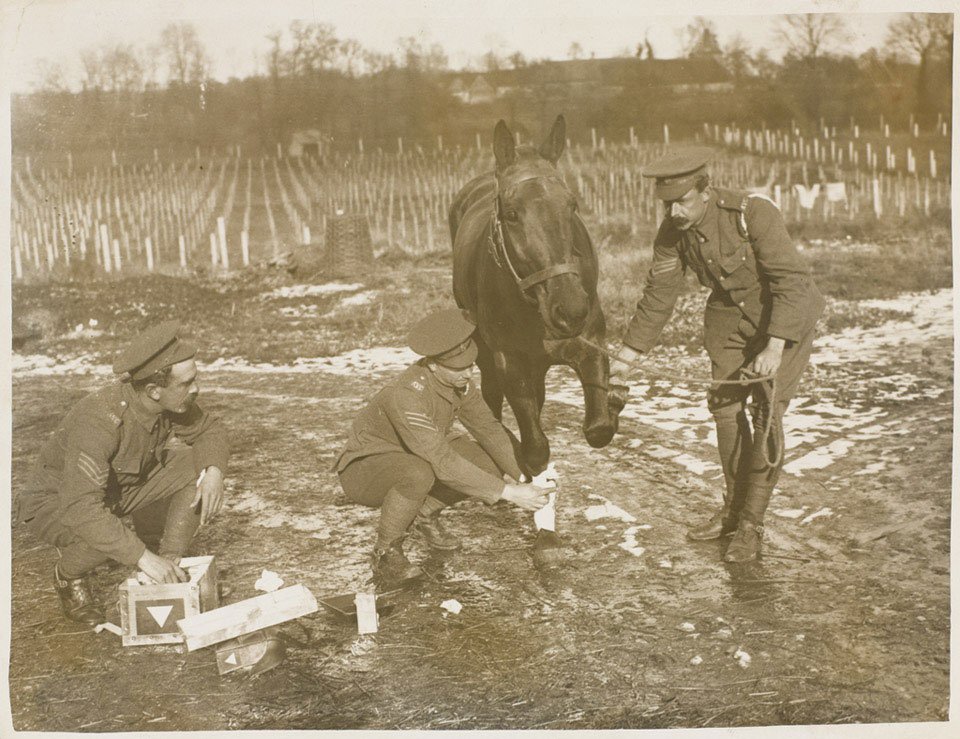
Nancy Conn’s quick and methodical investigation stopped the outbreak of typhoid in Edinburgh. Folk stopped drinking from the Water of Leith and eventually the river got cleaned up. This photo is from the 1983 “Operation Riverbank” in Leith.

Dr Agnes “Nancy” Kirkland Conn retired in 1979 and died in March 2013 aged 93. A Broughty Ferry lass, she went to Dundee High then did history and later medicine at the University of St Andrews. She also played hockey for Scotland.
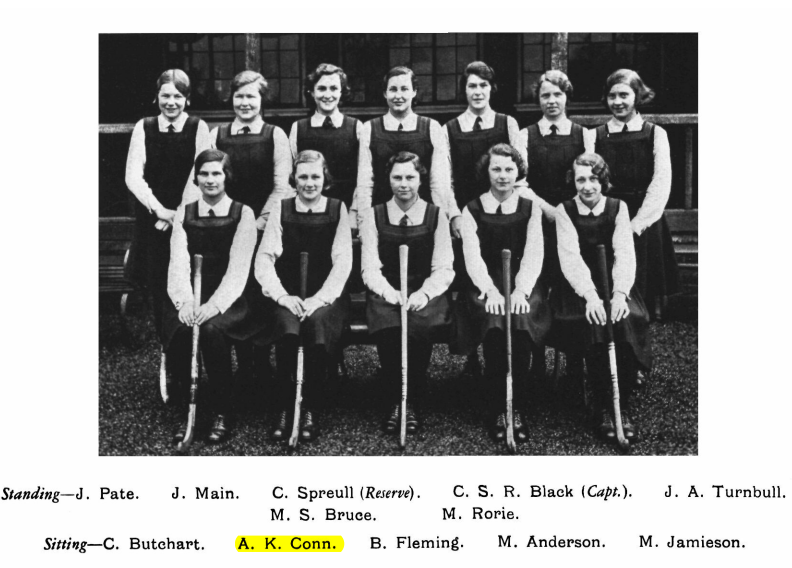
POSTSCRIPT: So I said Dr Conn is an unsung hero, but she does appear in Sara Sheridan’s “Where are the Women?”. There is an imagined exhibit at the Glasgow Science detailing her work. Unfortunately, this fictitious installation is the only thing I could find for her.
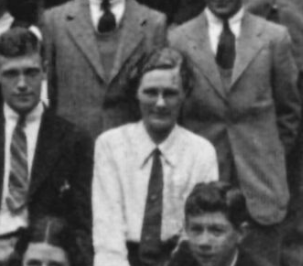
Dr Conn’s 1972 Journal of Hygiene paper on the outbreak: https://www.jstor.org/stable/3861420
Her obituary in the British Medical Journal: https://doi.org/10.1136/bmj.f7263 …and here https://www.legacy.com/obituaries/edinburghnews-scotsman-uk/obituary.aspx?n=agnes-conn&pid=184693199 …
Andy Arthur (Twitter: @cocteautriplets) IDed the unlabeled map as Colinton for me.
The photos:
1980s Leith: https://www.edinburghnews.scotsman.com/heritage-and-retro/heritage/25-photos-showing-leith-it-looked-1980s-regeneration-637369 …
The photos of her as a teenager in the 1930s came from the archives of High School of Dundee. http://www.archive.highschoolofdundee.org.uk/default.aspx
And it was in Sara Sheridan’s 2019 book “Where are the Women?” that I first heard about Dr Conn.
For anyone who is a better Wikipedian than I am, I started a wiki page for Dr Conn https://en.wikipedia.org/wiki/Nancy_Conn Please chip in!
In 1886, destitute and disabled, James Gordon pulled a wheelbarrow from Dundee to London and back as a stunt to earn money for his family. He sent money home and updates to the press from every town he stopped in.

Long distance wheelbarrowing became *the* craze for 1887 in Scotland. Gordon himself probably got the idea from the Lyman Potter who walked across America for money in 1878. Gordon had lost three right fingers which made it hard for him to find work.

The nation excitedly followed his progress in the newspapers. He was briefly the most famous Dundonian. You can hear a detailed account of his story (and others from Old Weird Dundee from Erin Farley @aliasmacalias, who does excellent videos about Dundee’s forgotten past.
Farley, E. (2020) Leisure and Culture Dundee. https://www.youtube.com/watch?v=COIK1ItWMuQ&feature=youtu.be
Illustrated London News. 11th December 1886. pg. 11
Three years before after St Columba fought the Loch Ness Monster in 565, he lost a boat race to Lismore against St Moluag. The prize was the rights to set up a monastery on the island. Trailing behind, Moluag cut off his own finger and launched it at the shore, thus winning the race and he was able to build his monastery.
Known by their scarred faces, the Redskins was Glasgow’s (& Scotland’s) largest ever gang. In 1916 its “queen” was Annie Rennie. She once stabbed a woman 14 times during a square-go. The other woman was fined more as she “was married and should know better”.

The fight started after Annie took exception to Mary Glen singing during the music at a dance hall. Someone shouted “Get aff yer shawl and get in at her!” Sympathy was with Annie because Mary was the wife of a soldier, defending his country, while she went to a dance…
The Illustrated Police News. 16th November 1916. pg. 4.
In 1888, landless crofters at Aignish demanded a tenant farmer vacate so they could divide his land up for crofts. The Riot Act was partially translated into Gaelic and 11 men were arrested. The marines, police, and the Royal Scots were sent to quell the riot.
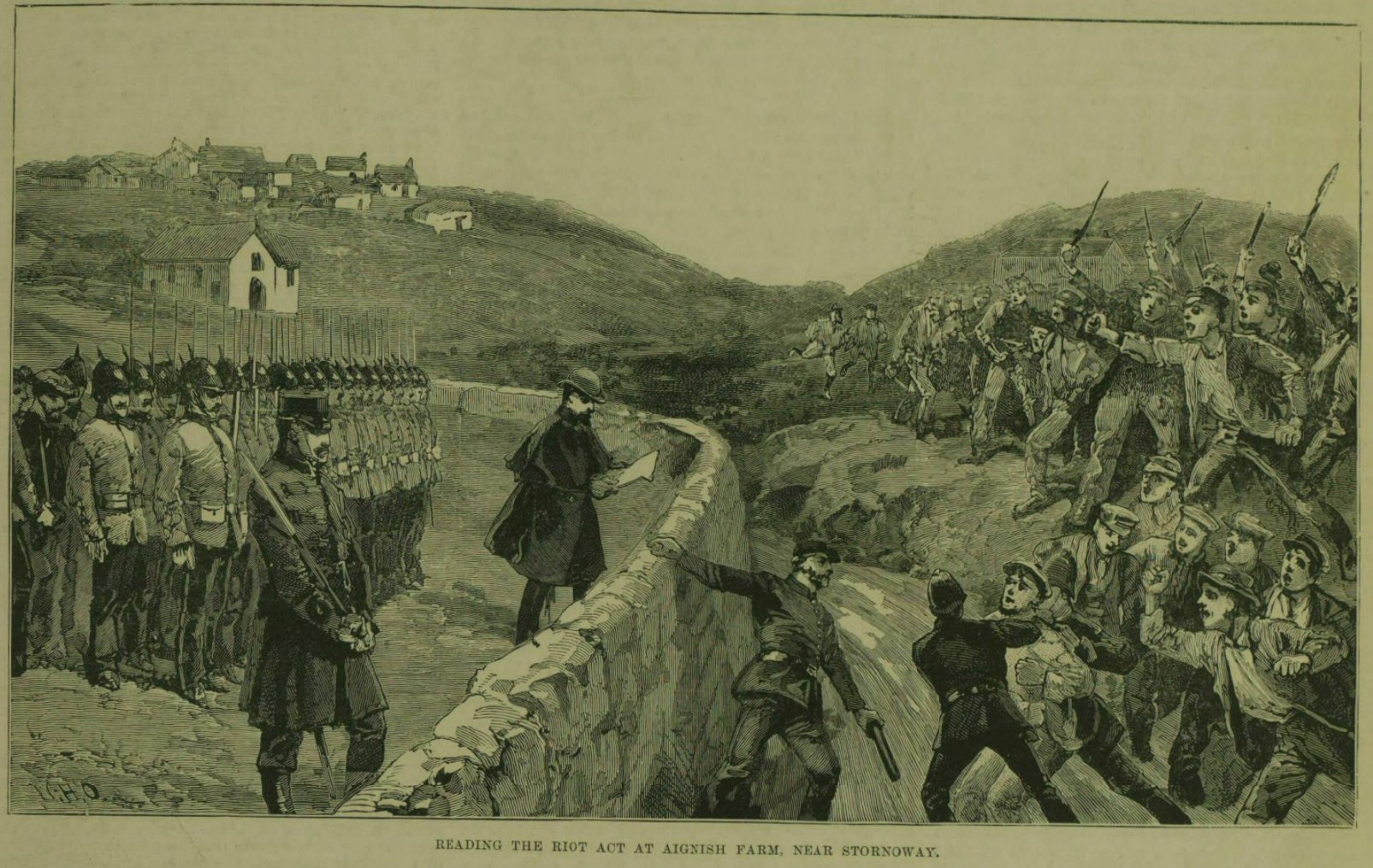
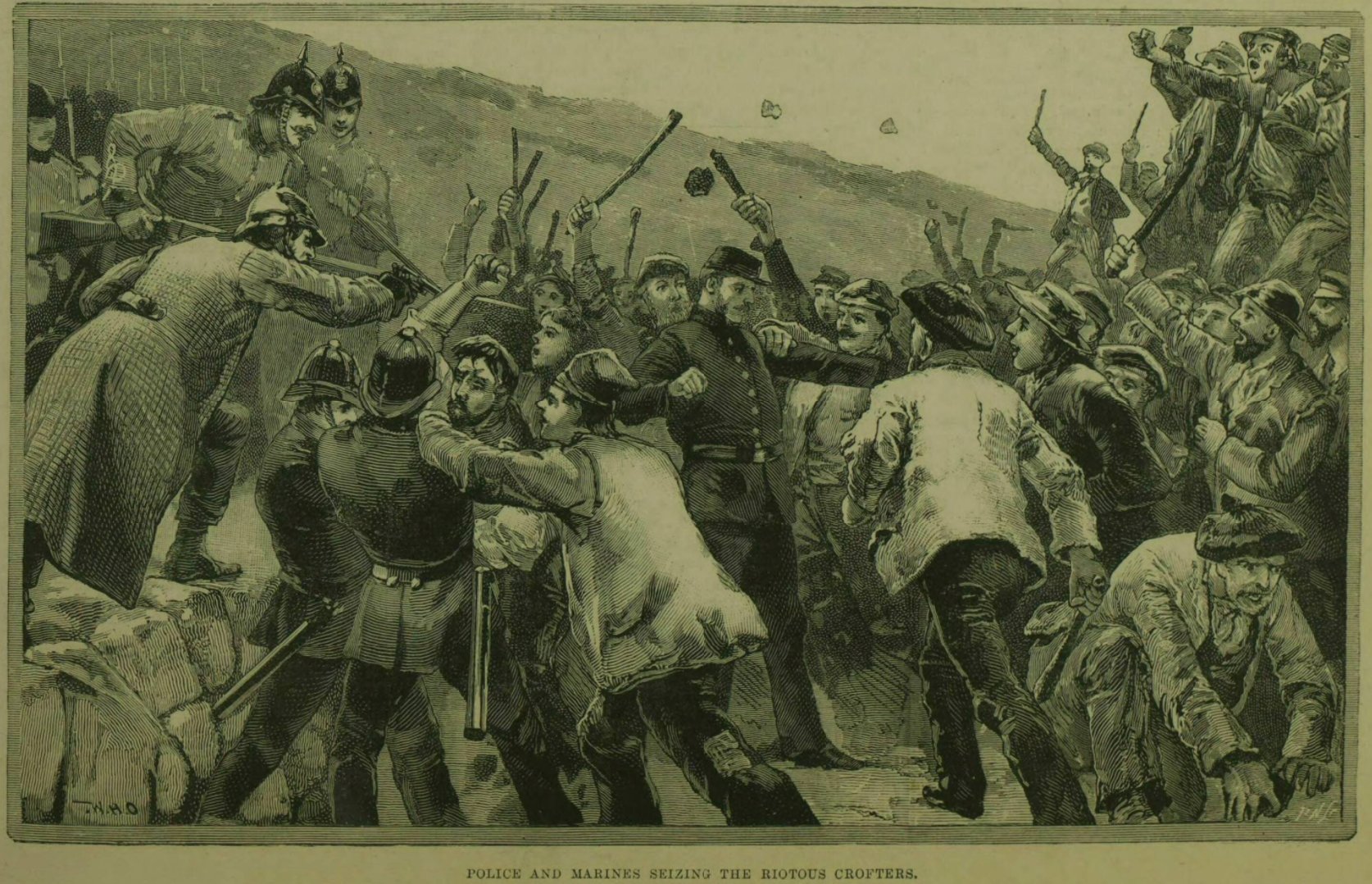
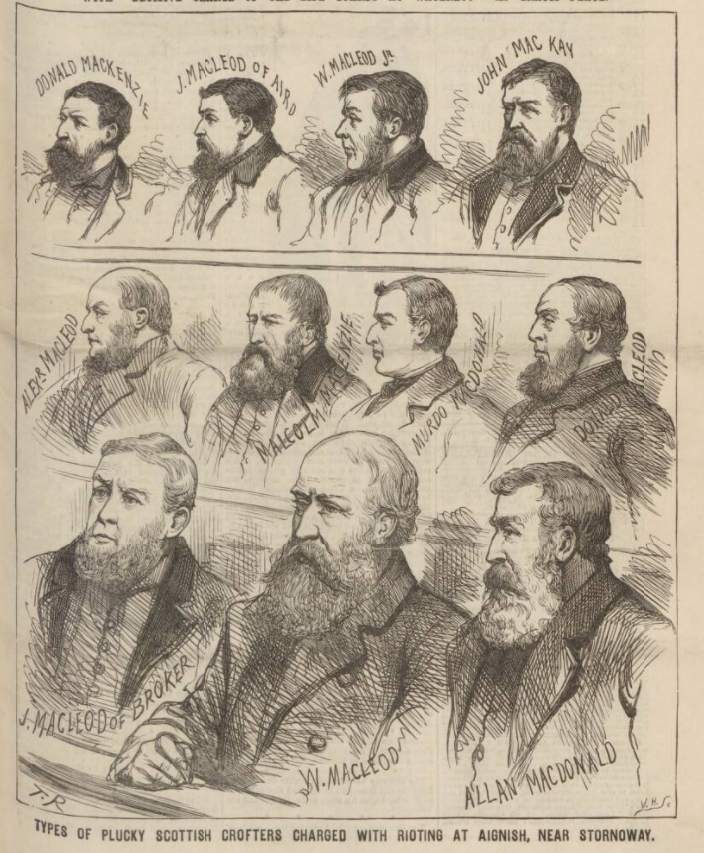
It really was fixed-bayonets vs. cas chroms. The arrested men all got sentences of about a year. Aignish Farm wasn’t broken up into crofts until 1905. A memorial statue now stands at the site of the riot.
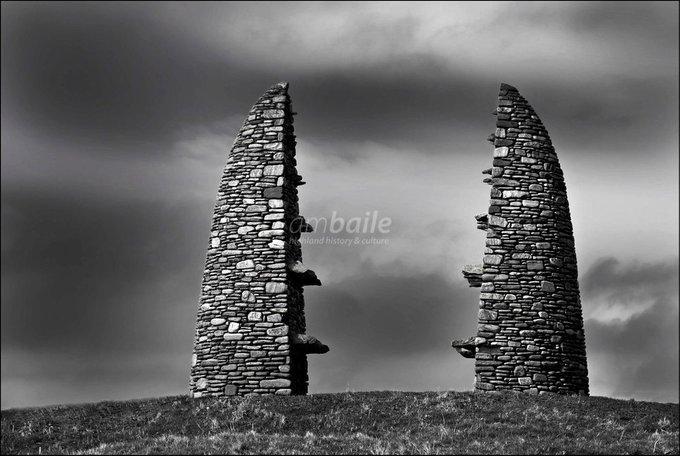
It would seem that many of the London papers were on the side of the crofters, judging from the positive language used to discuss the riot. For context, the Illustrated London News published these sketches of Lewis:
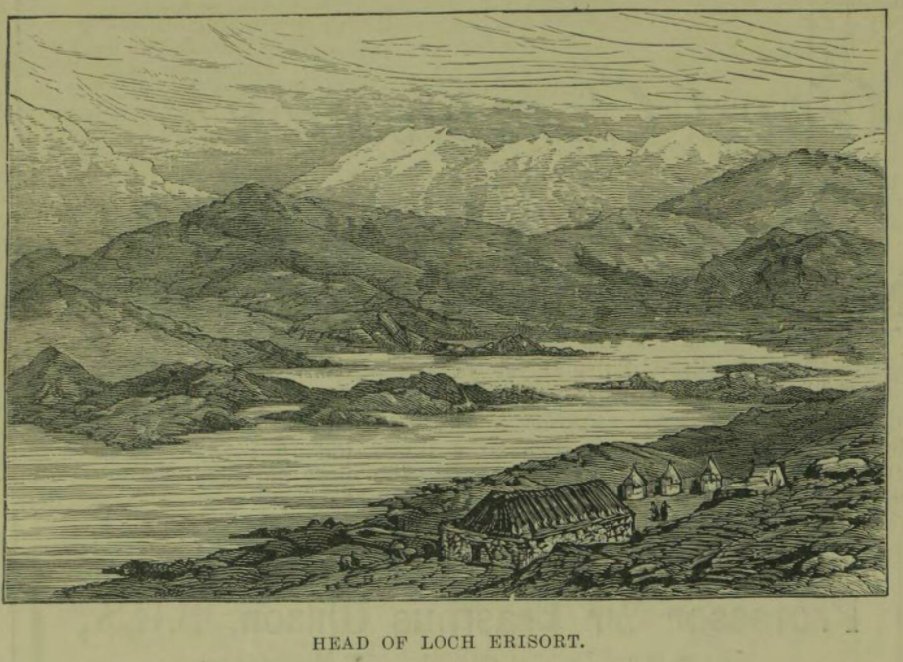
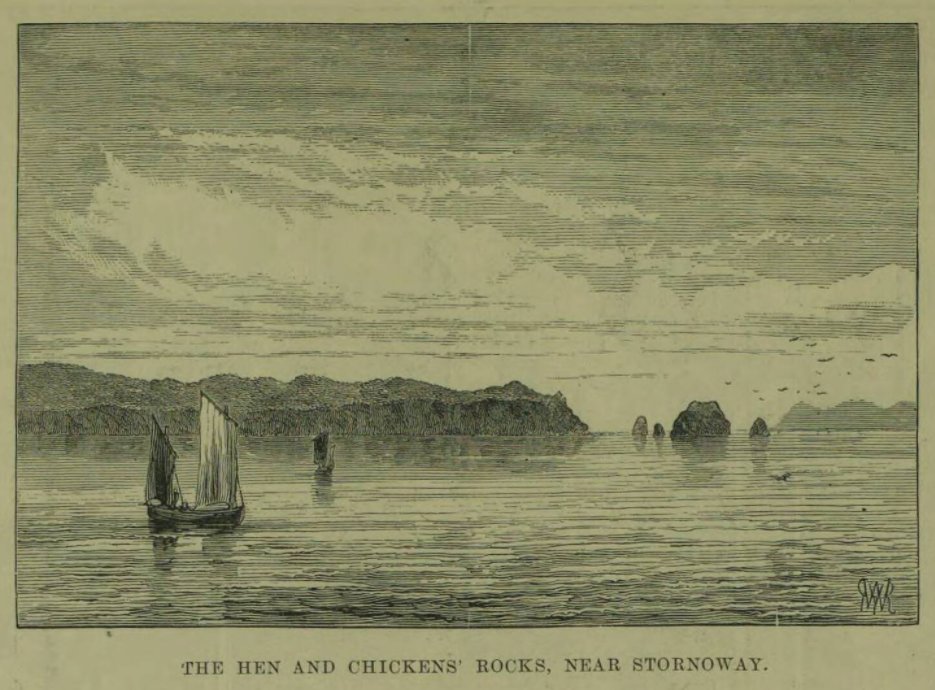
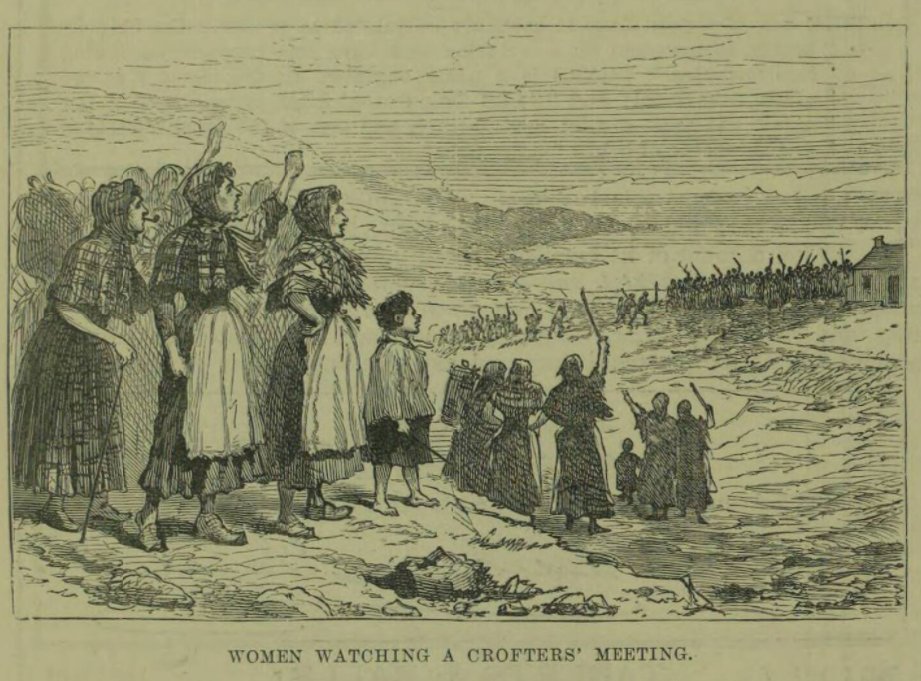
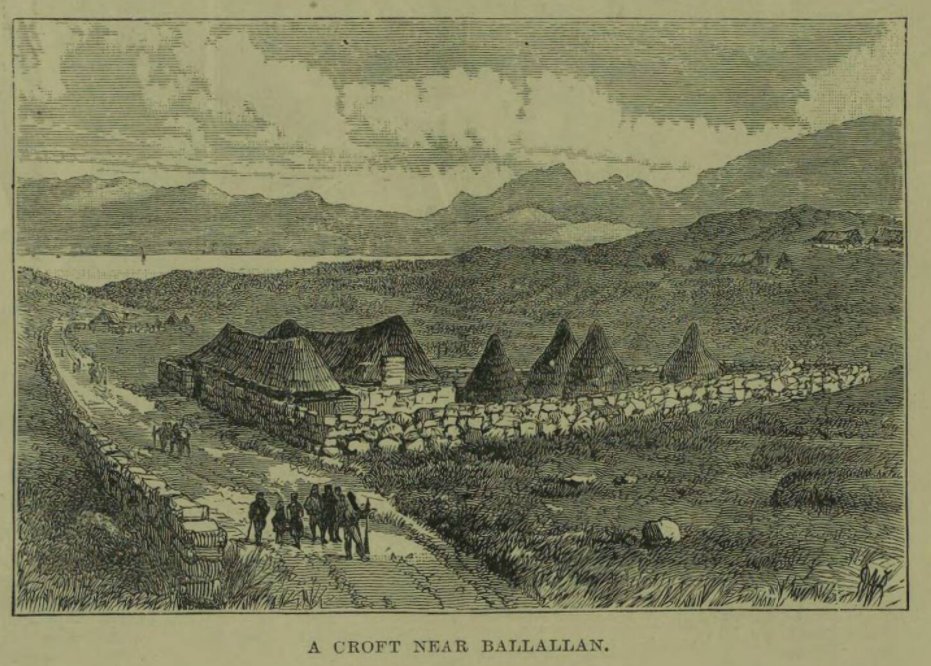
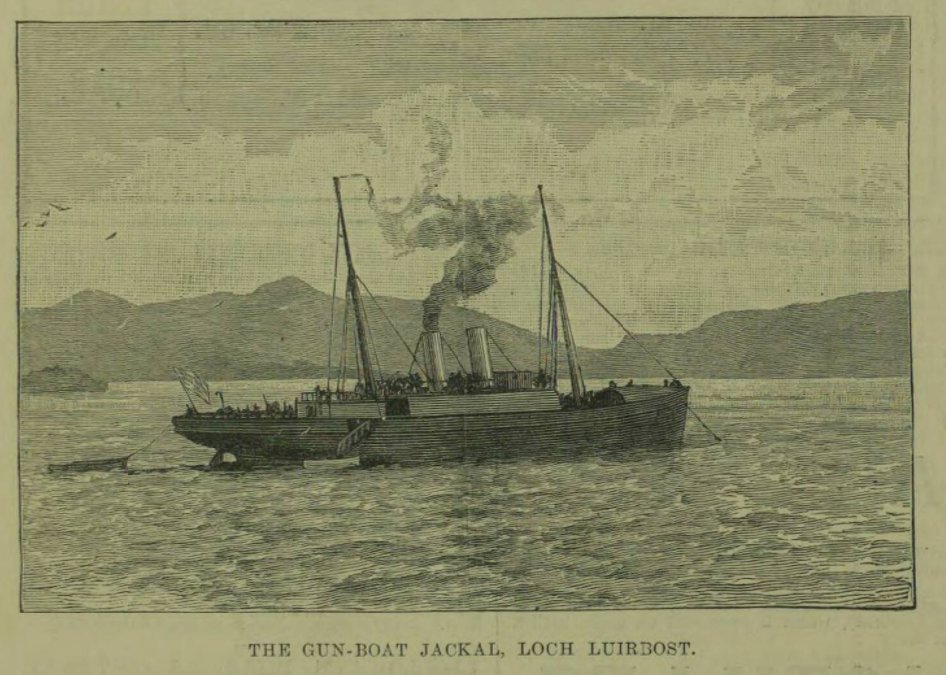
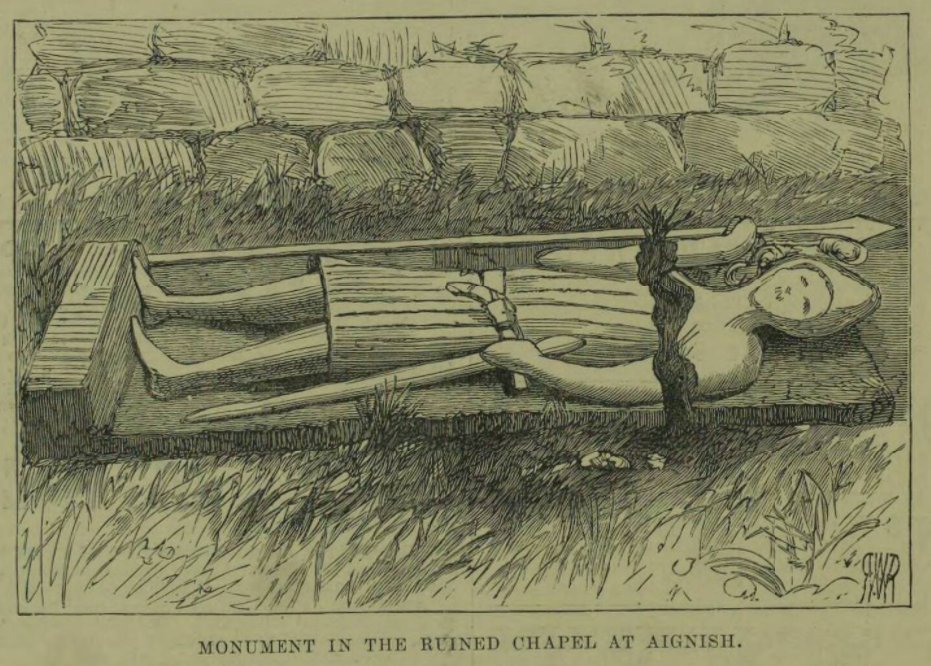

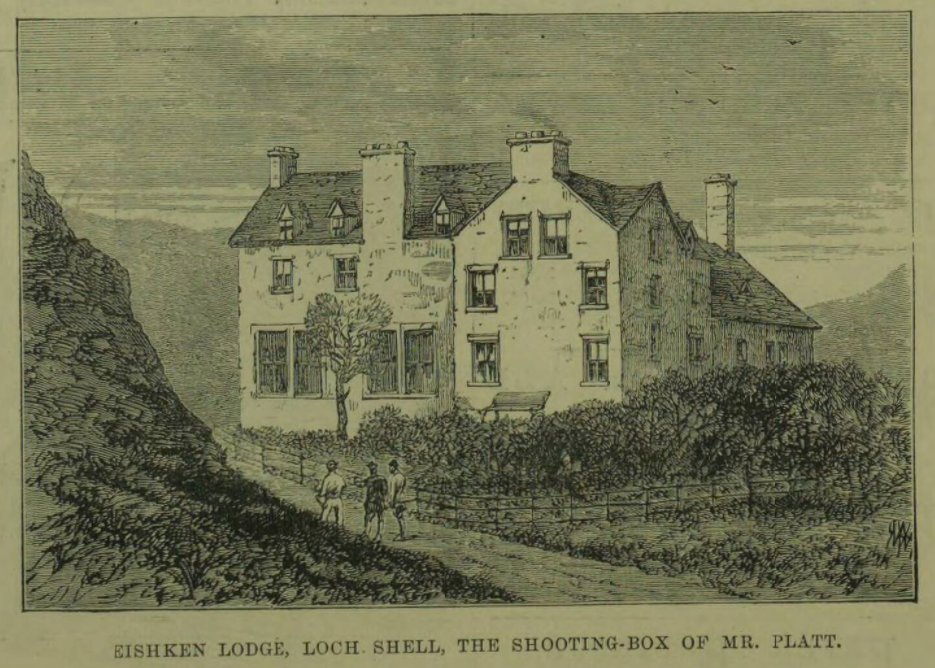
Aignish Memorial. Am Baile https://www.ambaile.org.uk/detail/en/21987/1/EN21987-aignish-memorial-isle-of-lewis.htm
Illustrated London News. 21st January 1888, pg. 1.
Illustrated London News, 28th January 1888, pg. 13
Penny Illustrated Paper. 4th February 1888, pg. 1.
In 1900, a newspaper column entitled “Then and Now: Woman’s Development and Achievements” discussed how far women had come since 1850 in terms of equality and representation. The modern woman in 1900, had left the “vast amounts of household drudgery” that took up her time in 1850 and was now in almost every role in the workplace.
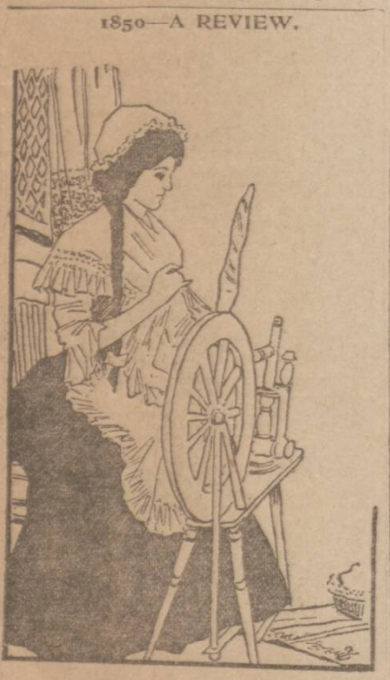
The column also forecast what women might be up to in 1950 and how she would look.
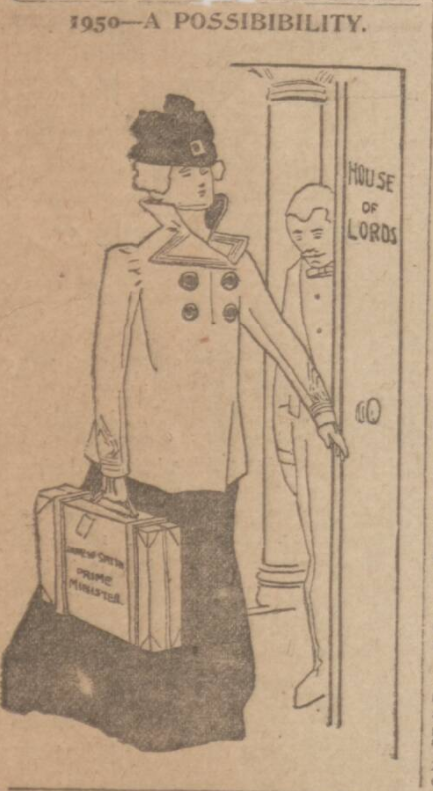
Dundee Evening Post, 28th February 1900, pg.4.
Filed under things you didn’t know could kill you:
In 1900, Alexander Crighton, aged 11, from Montrose, died after a single orange pip got stuck in his intestine. It created a small lesion which became gangrenous. He died within a week.
Always chew your pips!

Dundee Courier, 18th December 1900. pg. 4
Hip hip hooray it’s the Burryman’s day!
On the second Friday in August, a South Queensferry a man clad in burrs walks a 7 mile route around town while folk give him whisky (through a straw) for good luck. The tradition may be 900 years old.

I found this drawing in the Dundee Evening Post for the 26th January 1900 and challenged Twitterfolk to guess its purpose.

I hid its true function and got some weird and wonderful suggestions. I’m not sure if something like this was ever used or even built. Maybe it was just a fanciful notion of the paper’s illustrator. If you know anything about it, let me know! Here is the description which followed the sketch.

Dundee Evening Post, 26th January 1900, pg. 4.